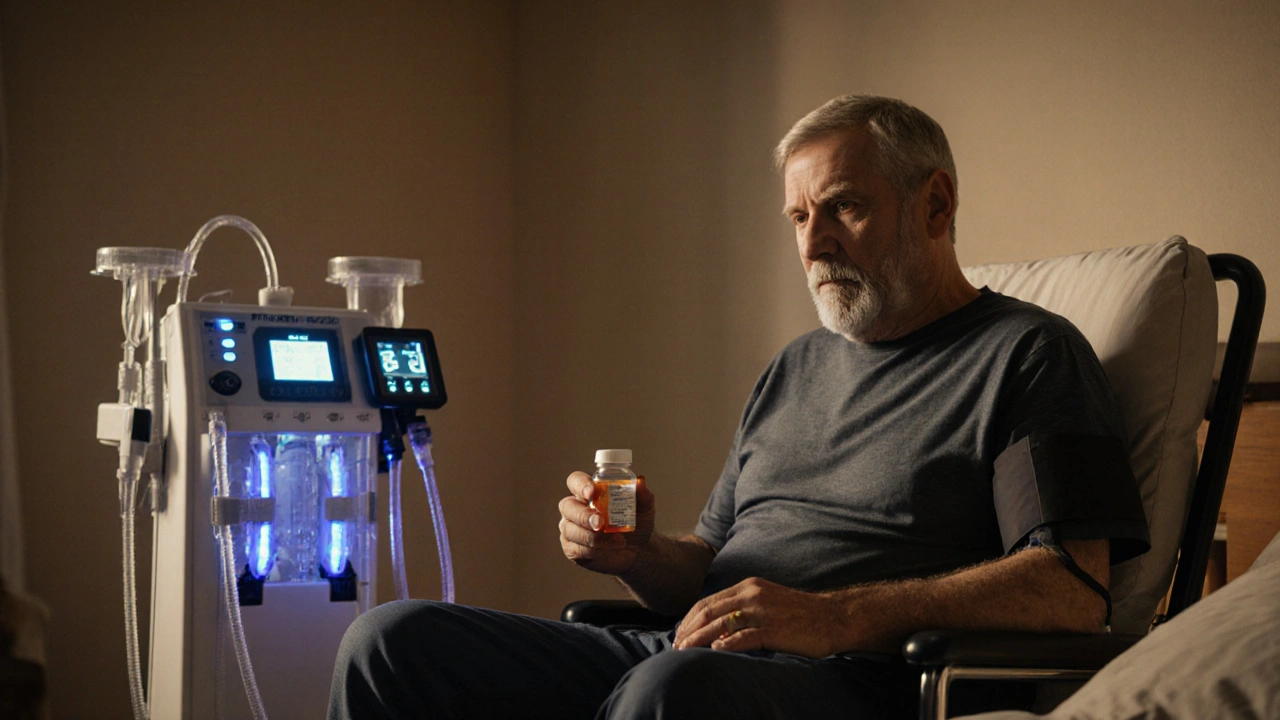A practical guide on how renal failure impacts mental health, with clear steps to handle anxiety and depression for patients and caregivers.
Coping Strategies: Simple, Practical Ways to Handle Stress, Anxiety & Chronic Illness
Your brain reacts the same way to a work deadline and a chronic health problem: it signals threat and pushes you into fight, flight, or freeze. That feels awful, but the good news is there are simple, repeatable moves that calm your body and help you think clearly again. Below are practical tools you can use today and a short plan for when to get extra help.
Quick tools you can use right now
4-4-6 breathing: breathe in for 4 seconds, hold 4, exhale 6. Do this 5 times and you’ll lower your heart rate and quiet racing thoughts.
Grounding 5-4-3-2-1: name 5 things you see, 4 things you can touch, 3 things you hear, 2 things you smell, 1 thing you taste. It pulls you into the present and cuts panic short.
Progressive muscle release: tense one muscle group for 5–7 seconds, then relax. Move from feet to face. This helps release physical tension fast.
Mini-movement breaks: when stress spikes, stand and move for 2–5 minutes. A short brisk walk, a few stretches, or marching in place resets your mood and focus.
Build routines that prevent bad days
Sleep, light, and timing matter. Pick a wake-up time and try to keep it consistent. Get 10–20 minutes of morning sunlight—helps reset your body clock and lifts mood.
Activity scheduling: write one small task each morning you’ll finish that day (even if it’s “make lunch”). Completing a tiny goal builds momentum—this works better than a long to-do list when you’re low on energy.
Food and caffeine: regular meals stabilize blood sugar. If anxiety is high, cut back on late-afternoon coffee and limit alcohol—both make anxiety worse over time.
Social check-ins: aim for one real connection each day—a text, a short call, or a quick coffee. Support prevents isolation and gives you perspective when things feel overwhelming.
Know your warning signs: more than two weeks of poor sleep, increasing panic, or withdrawal from activities are red flags. If you notice those, step up your plan.
Medication and therapy—what to expect: medications can help but they’re tools, not fixes. For example, buspirone (Buspar) eases chronic anxiety for some people but can take 2–4 weeks to work and won’t stop a panic attack immediately. Therapy approaches like CBT teach skills that last—many people combine therapy with medication for the best results.
Create a simple bad-day plan: 1) Use two quick tools (breathing + grounding). 2) Do one tiny task. 3) Use your support (text a friend or join a support group). 4) If safety is a concern, contact a clinician or local crisis line.
Want a practical next step? Pick one quick tool above and practice it twice today. If you find yourself needing more help after two weeks, reach out to a clinician or a peer support group—getting help early keeps problems smaller and easier to manage.
Melasma has a significant emotional impact on those who suffer from it, as skin discoloration can affect our self-esteem and confidence. I've found that it's vital to acknowledge these feelings and seek support from friends, family, or support groups. Educating ourselves about the condition, its causes, and treatment options helps in coping with melasma. Additionally, finding a skincare routine that works for our unique needs and embracing self-care practices can make a difference. Remember - we are not defined by our skin, and our worth goes beyond appearance.


